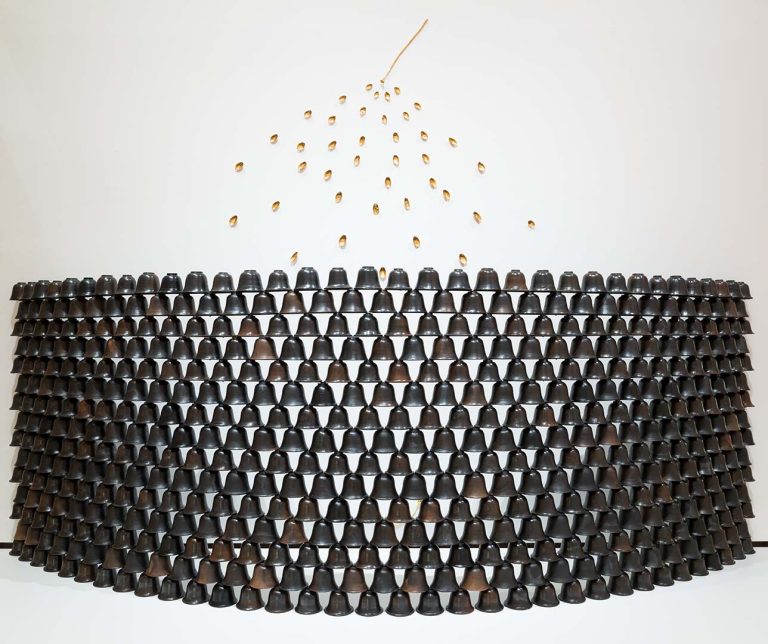We acknowledge the Traditional Owners of the land on which the Queensland Art Gallery | Gallery of Modern Art stands and recognise the creative contribution First Australians make to the art and culture of this country.

Montien Boonma / Thailand 1953—2000 / Lotus sound 1992 / Terracotta, gilded wood / 390 x 542 x 117cm (irreg.) / The Kenneth and Yasuko Myer Collection of Contemporary Asian Art. Purchased 1993 with funds from The Myer Foundation and Michael Sidney Myer through the Queensland Art Gallery Foundation / Collection: Queensland Art Gallery | Gallery of Modern Art / © QAGOMA
Montien BoonmaLotus sound 1992
Not Currently on Display
One of the most gifted sculptors in Thailand, Montien Boonma consistently searched for ways to break out of the strict confines of traditional art. While his work is based on a search for alternative means of expression in sculpture, it still maintains inspiration from indigenous roots and traditional values.
Moved by the experience of wandering in temples and hearing the resonating sound of bells clanging in the wind, Boonma attempts to recapture the feeling of inspiring awe overwhelmed with reverence. Lotus sound consists of hundreds of terracotta bells installed in a curved wall-like formation. Above this tenuous structure hang gilded petals of the lotus flower. Instead of the petals opening to disclose the Buddha seated on the lotus pericarp, or the terracotta bells making sound, there is blankness and silence. These objects signify certain symbolic formulas for viewers to imagine the presence of the Buddha through an invocation of inner peace for the viewer.
A gifted sculptor, Montien Boonma searched for ways of realising a contemporary sculptural practice within a local, as well as an international, context. In this he was a pioneer in Thailand and influenced an entire generation of young artists by providing an alternative conceptual framework for the development of contemporary sculpture.
Boonma was a devout Buddhist and turned to its discipline as a means of thinking about the contemporary world. Aware of a rapidly modernising Thai society and a related distancing and rupturing of traditional forms of spiritual life, he continued to reflect on Buddhist thought as an essential starting point for his practice. He used familiar Buddhist symbols such as the bowl, bell and lotus as one method of locating the works within a specific belief and ritual system. He also extended many of his sculptures to incorporate process based elements, such as the meditation sculptures. These structures often appealed to the sensory aspects of the body — scent, sound, sight — as a means of creating a space to lead the viewer/participant into contemplation and reflection.
He used a range of materials from earth and rice flour to terracotta, wood, steel and cement. Boonma consistently explored the sensuality of his material but always as a means of offering a meditation. His works never drift into the realm of nostalgia for a lost tradition, but are instead rigorous and poetic articulations.